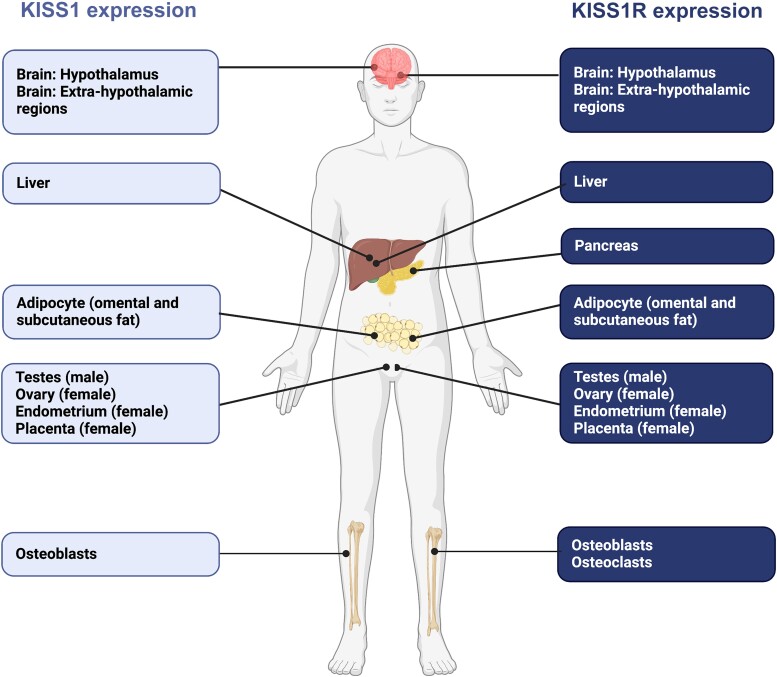Figure 2.
KISS1 and KISS1R human gene expression in areas where kisspeptin signaling has well-identified roles. Expression is abundant in other areas of the human body, not illustrated in Fig. 2, in which the full role of KP signaling has yet to be elucidated. This widespread distribution of KISS1 and KISS1R reflects the pleiotropic action of KP, beyond reproduction. In humans, the tissue distribution of KISS1 and KISS1R has been identified using RT-PCR methods. KISS1 mRNA is predominantly expressed in the placenta, with the next highest level in the testis, and moderate levels in the pancreas, liver, uterus, gonads, and small intestine. KISS1 mRNA is also strongly expressed in bone, in particular the osteoblasts. KISS1R expression is particularly abundant in the placenta, pituitary, spinal cord, liver, pancreas, and bone (osteoblasts and osteoclasts), but expressed at lower levels in other tissues, such as the stomach, uterus, small intestine, thymus, spleen, lung, gonads, heart, kidney, adrenal gland, bone, and fetal liver. Both KISS1 and KISS1R are also expressed in the brain, and in particular the human hypothalamus, as well as extrahypothalamic regions, such as the amygdala, caudate nucleus, cerebellum, cingulate gyrus, globus pallidus, hippocampus, medial frontal gyrus, nucleus accumbens, parahippocampal gyrus, putamen, spinal cord, striatum, substantia nigra, superior frontal gyrus and thalamus, as localized by RT-PCR. KISS1, kisspeptin gene; KISS1R, kisspeptin receptor gene; KP, kisspeptin; mRNA, messenger RNA; RT-PCR, reverse transcription polymerase chain reaction. Figure created with BioRender.com.

